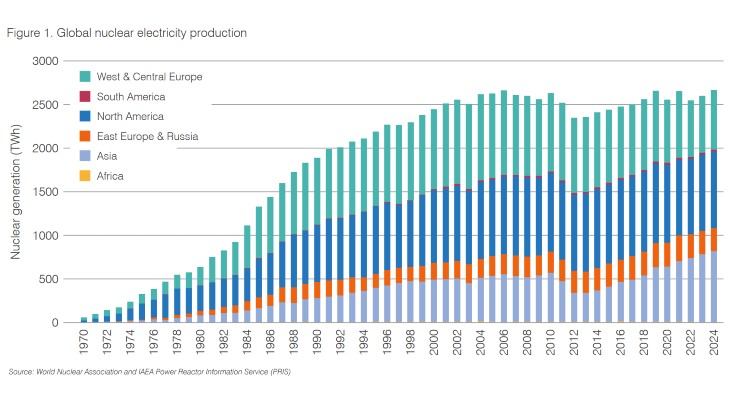The NSC is the largest moveable land-based structure ever built, with a span of 257m, a length of 162m, a height of 108m and a total weight of 36,000 tonnes equipped. It will make the accident site safe and with a lifetime of 100 years will allow for the eventual dismantling of the ageing makeshift shelter from 1986 and the management of radioactive waste. The NSC is designed to withstand temperatures ranging from -43°C to +45°C, a class-three tornado, and an earthquake with a magnitude of 6 on the Richter scale.
Because of its vast dimensions the structure had to be built in two halves which were lifted and successfully joined together in 2015. The process of sliding the entire arched structure from its assembly point into position over unit 4 was completed on 29 November 2016.
The end walls serve as a partition between the contaminated areas around unit and the remaining turbine hall. The walls - construction of which was completed by Ukrainian company PJSC Ukrenergomontazh in October 2016 - strengthen the existing facilities and seal the NSC from the environment, preventing the spread of radioactive materials to clean areas.
The NSC's ventilation system will ensure a relative humidity of no more than 40% to keep the metal structure free of corrosion. Pressure differentials will prevent the release of radioactive dust and other particles.
The NSC structure was built by Novarka, a consortium of the French construction firms VINCI Construction and Bouygues Construction.
State Specialised Enterprise ChNPP said that pre-commissioning activities, individual and integrated tests of equipment and technological systems of the NSC are progressing.
Novarka and SSE ChNPP workers recently performed integrated testing of the radiation monitoring system, the back-up power supply system and fire protection system of the NSC. During the tests, emergency situations were simulated and the response of the separate systems checked.
Prior to the final stage of integrated testing of the entire NSC complex, more systems will undergo similar tests. SSE ChNPP said it plans to carry out a 72-hour trial run with all the equipment and systems in operation under design conditions. On completion of the tests and trial run, SSE ChNPP will be required to obtain a permit for pilot operation and subsequently for industrial operation.
It noted that many of the NSC's systems - including power supply, lighting, communication, fire protection, heating, ventilation and air conditioning, radiation monitoring and the integrated control system - have remained in operational mode following their testing.
SSE ChNPP and Novarka have established a joint operational team that will be responsible for the operation of the NSC equipment and systems until the final handover acceptance of the facility from the contractor.

.jpg)



_17992.jpg)
_58913.jpg)
_75800.jpg)





